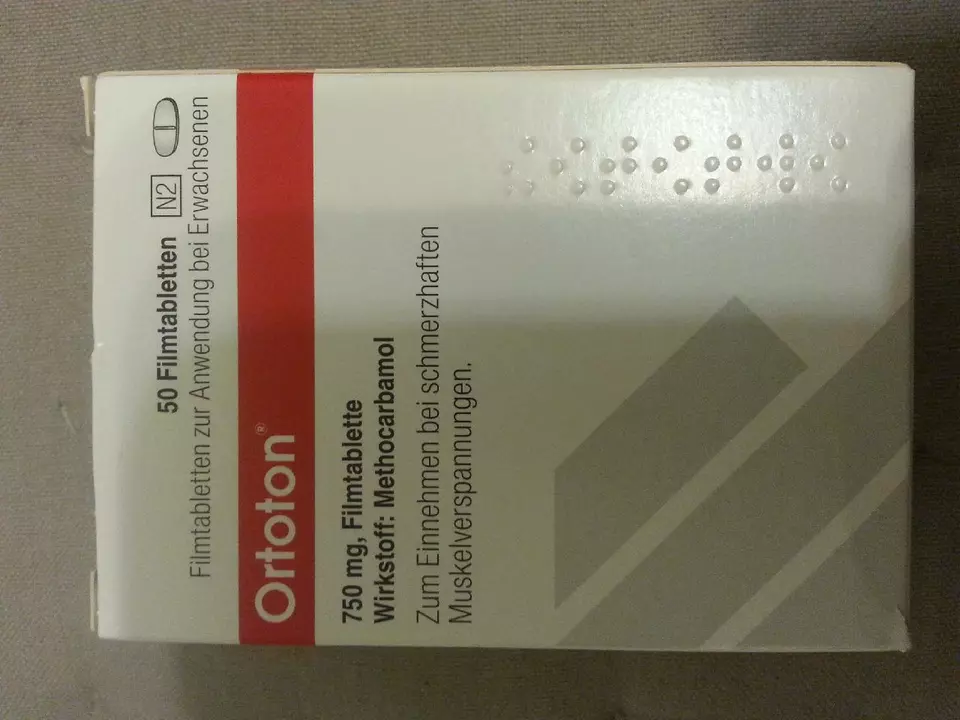Understanding Methocarbamol and Its Use in the Elderly
Methocarbamol is a muscle relaxant commonly prescribed to manage muscle spasms and pain caused by various conditions, such as injuries or arthritis. As the elderly population grows, it is essential to understand the safety and efficacy of this medication for older adults. In this article, we will discuss the precautions and usage of methocarbamol in the elderly, as well as potential side effects and interactions with other medications.
Why Methocarbamol Is Prescribed for Elderly Patients
As people age, they may experience various types of muscle pain and spasms, often resulting from conditions like arthritis, degenerative disc disease, or injuries. Methocarbamol is an effective treatment for managing these symptoms by relaxing the muscles and reducing pain. This allows elderly patients to maintain their daily activities and enjoy a better quality of life.
Precautions to Take Before Starting Methocarbamol
Before prescribing methocarbamol to an elderly patient, healthcare providers should take several precautions. First, they should review the patient's medical history and consider any potential drug interactions or contraindications. Patients with a history of liver or kidney disease, seizure disorders, or an allergy to methocarbamol should not take this medication. Additionally, it is essential to discuss any other medications the patient may be taking, as methocarbamol can interact with certain drugs, such as sedatives, antihistamines, and alcohol.
Appropriate Dosage and Administration for Elderly Patients
The dosage of methocarbamol for elderly patients should be carefully considered, as they may be more sensitive to the effects of the medication. In general, lower doses are recommended for older adults, with the potential for gradual increases if necessary. Methocarbamol is available in both tablet and injectable forms, and healthcare providers should determine the most appropriate administration method based on the patient's specific needs and circumstances.
Potential Side Effects and Adverse Reactions
While methocarbamol is generally well-tolerated, some elderly patients may experience side effects or adverse reactions. Common side effects include dizziness, drowsiness, headache, nausea, and vomiting. In some cases, these symptoms may be mild and go away on their own. However, if they persist or worsen, it is important to consult a healthcare provider. More severe side effects, such as difficulty breathing, swelling of the face or throat, or seizures, should be reported immediately, as they may indicate a serious reaction to the medication.
Monitoring and Follow-Up for Elderly Patients
Regular monitoring and follow-up are crucial for elderly patients taking methocarbamol. Healthcare providers should assess the effectiveness of the medication in managing pain and muscle spasms, as well as any potential side effects or adverse reactions. This may involve adjusting the dosage, changing the administration method, or considering alternative treatments if necessary. Patients should also be encouraged to report any new or worsening symptoms to their healthcare provider promptly.
Methocarbamol and Fall Risk in the Elderly
One potential concern with methocarbamol use in elderly patients is the increased risk of falls. The medication's side effects, such as dizziness and drowsiness, can contribute to balance problems and falls, which can lead to serious injuries in older adults. Healthcare providers should consider this risk when prescribing methocarbamol and discuss fall prevention strategies with their patients, such as using assistive devices, participating in balance exercises, and making home modifications to reduce fall hazards.
Managing Methocarbamol Overdose in Elderly Patients
While rare, methocarbamol overdose can occur in elderly patients, especially if they take more than the recommended dose or if the medication is not stored properly. Symptoms of overdose may include extreme drowsiness, difficulty breathing, seizures, or loss of consciousness. If you suspect an overdose, it is essential to seek medical attention immediately. Treatment may involve administering activated charcoal, providing supportive care, or, in severe cases, using a ventilator to assist with breathing.
Considering Alternative Treatments for Muscle Pain and Spasms
In some cases, elderly patients may not be suitable candidates for methocarbamol or may experience side effects that outweigh the benefits of the medication. In these instances, healthcare providers may recommend alternative treatments for managing muscle pain and spasms. These may include physical therapy, massage, acupuncture, or other medications with fewer potential side effects, such as nonsteroidal anti-inflammatory drugs (NSAIDs) or acetaminophen.
Communicating with Your Healthcare Provider
As an elderly patient or caregiver, it is essential to maintain open communication with your healthcare provider when considering or using methocarbamol. Make sure to discuss any concerns, potential side effects, or changes in symptoms, as well as any other medications or supplements you may be taking. By working together, you and your healthcare provider can ensure the safe and effective use of methocarbamol in managing muscle pain and spasms.








man i just saw my grandpa take this stuff last month... one minute he's fine, next minute he's nodding off in his recliner like a sleepy panda. doc said it's normal but i'm still scared to let him take it again.
Methocarbamol? Oh, you mean the muscle relaxant that turns seniors into human pillows? I've seen it firsthand-Grandma took it after her hip surgery, and suddenly she was a professional napper. Dizziness? Check. Confusion? Double-check. And don't even get me started on the fall risk-she took a tumble reaching for the TV remote. It's not a cure; it's a temporary escape hatch with a side of existential dread. If you're going to use it, monitor like a hawk, and maybe consider physical therapy instead-your spine will thank you.
Oh sweetie, you really think this is the answer? Let me guess-you’re one of those people who thinks pills fix everything. Next you’ll be asking if we can just inject joy into grandma’s IV.
This article is laughably inadequate. Methocarbamol is a relic from the 1950s-why are we still prescribing this to elderly Americans? In Germany, they use targeted neuromodulation and physiotherapy protocols. Here? We hand out sedatives like candy. It's a national disgrace.
I work with elderly patients in Delhi, and we rarely use methocarbamol here. Too many side effects. We focus on gentle yoga, warm compresses, and family support. It takes longer, but no one ends up on the floor.
Drowsiness is the real issue. Not the drug. The dosage.
My aunt took this after a bad fall. She was fine after a week of PT and cutting the dose in half. Don't panic, just talk to your doc.
I used to think drugs were the answer until I watched my uncle try to walk after taking methocarbamol. He looked like a marionette with tangled strings. Now I just rub his back with lavender oil and play old jazz. He smiles more. And doesn't fall. Sometimes, the quiet things work better than the loud ones.
The pharmacokinetics in geriatric populations are non-linear due to reduced hepatic clearance and altered volume of distribution. You need to titrate with extreme caution-Cmax and AUC can spike unpredictably. Also, polypharmacy is the silent killer here.
I've reviewed 37 clinical trials on this. The FDA’s warning label is understated. Methocarbamol has a 3.8x higher incidence of delirium in patients over 70 with baseline cognitive decline. Yet, it's still first-line? That’s not medicine. That’s negligence dressed in white coats.
i read this article and i'm like... why are we even talking abt this? my cousin took it and ended up in the er cause he thought he was a chicken. no joke. he was clucking and pecking at his food. doc said it was the med. i'm not kidding. this stuff is wild.
I’ve seen this happen too many times. The doctor says, ‘It’s safe,’ and the family believes them. But then the falls start. One trip to the ER, and suddenly you’re dealing with hip fractures, hospital stays, and lost independence. It’s not just about the drug-it’s about the system that lets this happen. We need better guidelines, not just warnings.
As a healthcare professional with over two decades of experience, I must emphasize that methocarbamol should be considered only after non-pharmacological interventions have been exhausted. Physical therapy, aquatic exercise, and cognitive behavioral approaches for pain management are far more sustainable and carry negligible risk. Prescribing this medication without a comprehensive geriatric assessment is medically irresponsible.
My advice? Start at half the dose. Wait a week. If it helps, great. If not, try something else. No need to gamble with grandma’s balance.